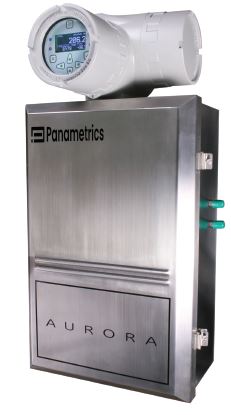
Moisture in refinery recycle gas with Panametrics
Panametrics' Customer Story
The catalytic reforming process converts low octane heavy naphta to high octane reformate for gasoline production. The process involves running dried naptha feedstock through a reactor containing a high value catalyst bed (typically platinum) at a high temperature and pressure for this conversion.
The recycled unconverted gas from the reactor is fed back into the reactor to increase the conversion rate. The moisture content in this process is typically maintained between 10-25 ppmv for optimal process efficiency.
Application
The catalyst is activated by injecting Chlorides and a specific amount of moisture into the process. Too much moisture can cause formation of HCL which can lead to corrosion and of metal infrastructure and reduction of catalyst life while too little moisture can cause deactivation of the catalyst. The optimal amount of moisture is between 10-25 ppmv, this is controlled by continuous moisture measurement of the recycle gas to ensure feed dryers are working efficiently and the injection rate of moisture is correct.
Customer's Challenge
Current technologies utilized to monitor moisture in hydrogen recycle gas include Quartz Crystal Microbalance (QCM) and Aluminum Oxide. Both are widely accepted, but until recently their drawbacks have been tolerated. Aluminum Oxide sensors can be damaged during start-up of the process and during upset conditions when high moisture contents and corrosive gases are both present. Spare probes and annual calibration are necessary. The OPEX costs add up over time potentially offsetting the benefit of the initially low CAPEX, if the technology is not properly implemented. QCM technology includes the necessary onboard calibration mechanism to keep the analysis accurate. This feature along with the accuracy and speed of response of the measurement come with a high CAPEX. Although there is no need for the sensor to be returned for calibration, maintaining the purifier and permeation tube in the analyzer comes with a high impact on the OPEX budget. Replacement costs for damaged sensors are also high.
Panametrics' Solution
Panametrics Aurora analyzer uses tunable diode laser absorption spectroscopy (TDLAS) to accurately measure moisture in refinery recycle gas. It is certified for use in hazardous areas and its stainless steel construction and other inert wetted parts result in a hygrometer that doesn't drift and is immune to contaminants. An inbuilt sample conditioning system means there is no need of preconditioning, just connect the process gas to the Aurora and you are ready to measure. A backlit three-parameter LCD provides direct readout of measured parameters plus an indication of system status. The unit offers hard wired mA outputs and MODBUS digital communication.
Application specifications: Typical Moisture ranges: 0-1000 ppmv on startup, 0-50 ppmv normal operation
Benefits:
Laser technology had a number of advantages over other types of sensor technologies.
• Rapid speed of response, typically in seconds, to changes in process moisture, in both dry-to-wet and wet-to-dry conditions. • With no drift in calibration, tunable diode laser absorption spectroscopy (TDLAS) technology does not require recalibration, resulting in lower maintenance requirements and cost. • Non-contact measurement which eliminates the wear and tear on the optical sensing system from HCl or other process contaminants. • Integral sample system minimizes interference on the moisture measurement from other components in the process.
Learn more about our tunable diode laser absorption spectroscopy (TDLAS) hygrometers



